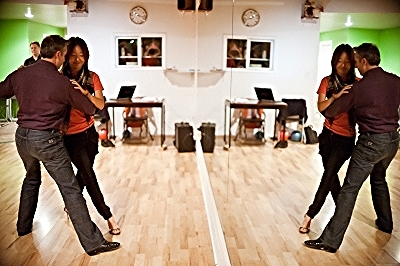Requesting Focused Feedback on Your Dancing
/When you want your partner to give you feedback, it's good to be very specific.Photo By Kenneth Wei
Contributed by Andrei Andreev, The Empathy School
Tango can a very rich and multifaceted experience which is delicious for aficionados, but may cause confusion during the learning process. This is why I’d like to discuss the importance of focus when requesting and delivering feedback.
Focused feedback allows the person providing the feedback to pay attention to what is important to the learner and deliver clear, useful information.
There are a few parts to this:
1. The learner requests observation of specific aspects of their dance. The more detailed, the better:
A focused request: “I am working on my embrace.”
An even more focused request: “I am working on my embrace. I would like feedback on its consistency and feel.”
A more focused request will initiate a more precise observation and feedback.
2. Useful feedback is based on observations and not evaluations.
When thinking of observations, imagine what a camera would record: “Around one minute into the dance, your hand moved about an inch lower and the embrace lost a little bit of its tension.”
Evaluations, communicate a personal evaluation or judgement of the situation: “Your embrace was limp.” The issue with this is twofold: One, “limp” means different things to different people which makes vague, and two, the language of evaluations can be triggering for many of us as its terms are sometimes used to induce shame.
Therefore, when providing feedback, stick to observations. Of course, the human organism with all its senses can record much more than a camera, and this is all useful information! Use your sensitivity and help your learning partners to advance by offering them precise observation on the topic they requested.
This will help you become a better observer, and also ask for more precise feedback yourself. Happy dancing!
Update
on 2013-06-21 00:19 by Oxygen Tango
Andrei Andreev of The Empathy School works with Tango dancers on advanced communication skills between partners and community members using principles of Non-Violent Communication, at Oxygen Tango during practicas on Thursday nights.






